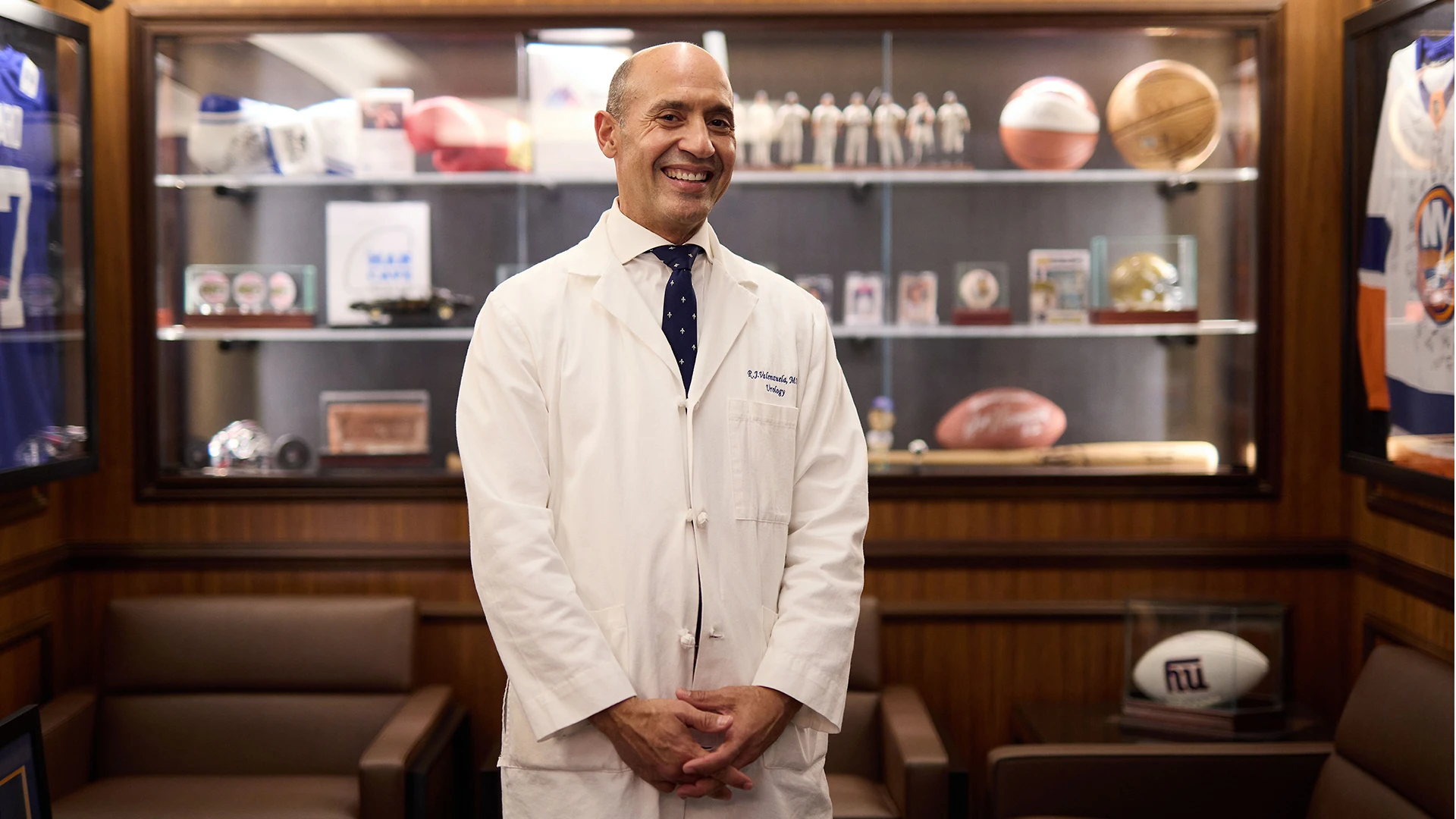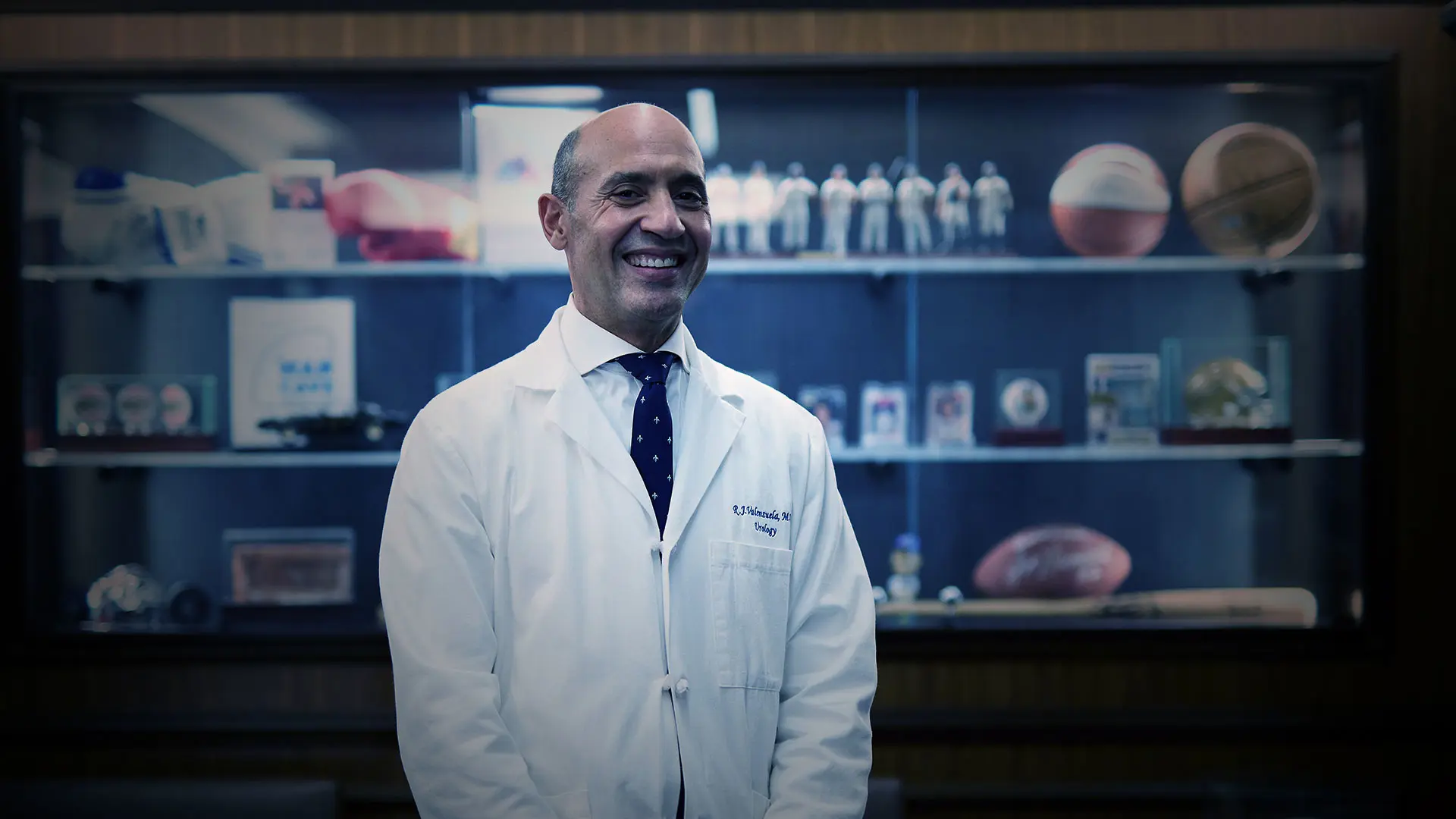For years, Robert Valenzuela, MD, cautioned patients that they might experience shortening of their penis following a penile prosthesis implantation (PPI) for erectile dysfunction. Today, he advises them that they might have a longer one.
“I tell them that they could potentially gain between two to three centimeters in length or in girth,” says Dr. Valenzuela, Assistant Professor of Urology, and Director of Penile Prosthesis Surgery at the Icahn School of Medicine at Mount Sinai. “I ask them if they are okay with this, and every patient says, ‘yes, absolutely.’”
Shortening of the penis has long been a key factor in patient dissatisfaction with PPI. But Dr. Valenzuela has helped to pioneer new procedures that are addressing that issue and alleviating patient concerns.

Robert Valenzuela, MD, Assistant Professor of Urology, and Director of Penile Prosthesis Surgery at the Icahn School of Medicine at Mount Sinai
One innovation is a new approach to tunica expansion technique (TEP), in which girth and length are maintained or enhanced through a series of small, staggered incisions along the tunica albuginea. These incisions—vertical for length preservation or enhancement, horizontal for girth preservation or enhancement—facilitate expansion of the penis much the same way that pleats expand a surgical mask but without compromising the ability of the penis to contain the prosthesis. Typically, surgeons perform TEP through circumcision of the penis; Dr. Valenzuela performs these procedures using a unique approach he developed—a single scrotal incision.
Very few surgeons in the United States do the procedure this way, according to Dr. Valenzuela, who performs approximately 250 PPIs each year. “When you do TEP through a circumcision, there is a higher risk of complication. The scrotal approach not only reduces that risk but is also more cosmetic. This procedure does not require a circumcision. As a result, uncircumcised men can still achieve the benefits of this approach without undergoing a circumcision.”
To start the procedure, Dr. Valenzuela makes a 3-centimeter scrotal incision, which he extends down to the penile compartment, exposing the urethra and corpora cavernosal bodies. He then degloves the penis via the incision by carefully mobilizing the dartos muscle away from the penile bodies to the level of the glans.
Next, Dr. Valenzuela mobilizes the Buck’s fascia on the cavernosal bodies 1 centimeter lateral to the urethra. This dissection is carefully performed from 2 centimeters proximal to the glans to the level of the penoscrotal junction. Once mobilization is taken across the midline to elevate the neurovascular bundles, Dr. Valenzuela is able to perform the tunica expansion by making 2-3-millimeter incisions on the corpora. Upon completion of the incisions, he returns the Buck’s fascia to its normal position, sutures it together, and then proceeds with implantation of the penile prosthesis in a standard form.
According to Dr. Valenzuela, it can take two to three hours to complete the procedure in cases involving length preservation and enhancement. Patients are discharged the same day with a drain, which Dr. Valenzuela removes two to three days later during the first follow-up consultation.
To help patients manage the pain of having an erect implant for the first 24 hours after the procedure, Dr. Valenzuela developed a unique anesthesia protocol with a local nerve block, eliminating the need for narcotics and their associated complications. Of 210 cases he has performed to date, he has achieved an infection rate of less than 1 percent. The national average is estimated to be between 1 percent and 5 percent.
Dr. Valenzuela also offers implantation options for patients who are looking for cosmetic enhancement. He is the first and only surgeon in the Northeast—and one of 10 selected physicians—to provide access to Penuma®. This is an FDA-cleared penile implant made of soft silicone that is specially designed to enhance girth and length of the penis for men who have normal erectile function but are not happy with the length, girth, or appearance of their penis in a flaccid state.
“It is purely aesthetic,” he explains. “These patients may be happy with how their penis looks in an erect state, but they feel dysmorphic about their penis when flaccid. This implant takes the elasticity out of the penis and makes it look fatter and longer.”
Dr. Valenzuela performs two to four Penuma implantations each week. This procedure can be performed under local sedation or general anesthesia through a small scrotal incision. It typically takes 45 minutes to complete implantation and patients are discharged the same day. There are several risks associated with the implantation, including seroma and capsular contracture, but Dr. Valenzuela indicates that only two of the 52 implantations he has conducted so far have had complications. The nationwide infection rate is approximately 3 percent.
Ever interested in expanding options for patients, Dr. Valenzuela continues to adopt new therapeutic approaches and develop new techniques to achieve positive outcomes among patients with erectile dysfunction who are refractory to medical management and those who want something more aesthetically pleasing.
“We have come a long way in being able to address the concerns that patients have had about implantations since the 1970s,” he says. “There are companies that are working on electronic-based prostheses that may simplify the procedure or reduce the risk of complications, and I am looking forward to these advancements and to helping this field evolve.”
